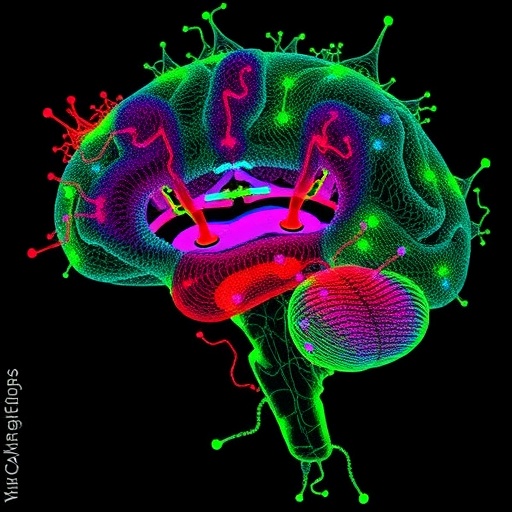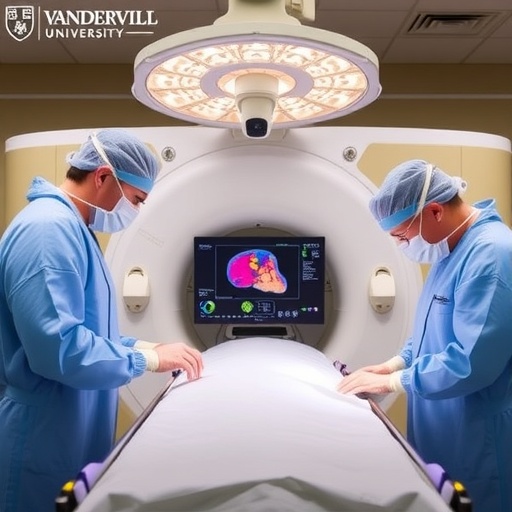
Credit: Xavier Lucas, Alessio Ciulli, University of Dundee
Scientists at the University of Dundee have reported a major breakthrough in targeting the causes of many diseases, using a `kiss of death' to destroy proteins which had previously been regarded as `undruggable'.
Much is known about proteins such as Ras and Myc which are known to be culpable in human cancer, and Huntingtin, which causes Huntingdon's disease, but as yet they have proved stubbornly resistant to efforts to find ways of tackling them with drugs.
Now researchers led by Professor Alessio Ciulli in the School of Life Sciences at Dundee have found a way of targeting similar proteins, using a small molecule approach in an unconventional way to target `bad' proteins by binding them to neutralising agents to start a process of degradation, and thereby removing them entirely.
"We know of many proteins which are active in causing diseases, but which we have been unable to block from going `rogue' or to stop them when they do," said Professor Ciulli.
"The major problem is that we have been unable to find the small molecules which can successfully bind to these proteins and at the same time hamper their function. It is a highly complex area – these proteins can often fool regulators within the cell and be extremely difficult to pin down with inhibitors.
"Research in our lab in the past few years has contributed towards establishing a different approach, one that has been theorised for many years but which is only now fully realised by this latest work. Instead of using the small molecule to try and disable the bad protein, we have developed a way of modifying it so that it can be used to attract the neutralising proteins, which then bind to their bad neighbour and act against it, starting a cascade process of degradation.
"Crucially, we have also found that it is not enough for this neutralising protein to sit close to the bad protein, it has to make direct contact with it, to `kiss' it. And not just a little peck, but a real `Gone With The Wind' embrace. We call this a 'kiss of death', as it is the key to ensure the degradation of the bad protein."
Professor Ciulli and colleagues focused their attention on a bivalent chemical degrading molecule called `PROTAC' (Proteolysis-targeting chimeric molecules). They have been able to create the first X-ray crystal structure of a PROTAC bound to both the 'bad' protein and the 'neutralising' agent (an E3 ubiquitin ligase), and found that it can successfully be deployed as a `magnet' to draw the two target proteins together.
"This discovery provides the first ever insights into how PROTACs work and how we can target proteins for degradation in a highly selective manner," said Professor Ciulli.
"This presents a paradigm shift in how we can ensure selective chemical intervention against proteins which we know are factors in causing disease but which until now have been impossible to successfully target. It points towards the possibility of drugging the `undruggable'."
The results of the research are published in the journal Nature Chemical Biology.
The work done by the Dundee team focused on pairing one of the BET bromodomain proteins, BRD4, which is an attractive drug target for cancer, with a selective BRD4 `degrader' called MZ1. They found that MZ1 could pull the two proteins together by folding into itself. Once the two proteins are joined in their `kiss' the interactions between them lead to degradation of the target. They showed how similar proteins BRD2 and BRD3 do not kiss the neutralizing protein as well, and guided by this information they were able to design new degraders that spare those proteins completely from the degradation process. This is important because it elucidates how degrading molecules could be designed in future to minimize off-target effects in ways that may not be possible using conventional inhibitors.
The Dundee team working on the project included postdoctoral researchers in Professor Ciulli's laboratory Morgan Gadd, Andrea Testa, Xavier Lucas and Kwok-Ho Chan, and Wengzhan Chan and Dougie Lamont from the Dundee Fingerprints Proteomics Facility.
Professor Ciulli said there were already promising signs from the pharmaceutical industry of significant investment in this research area.
"We now understand better how to turn inhibitors into degraders. The road to turning degraders into drugs will be long and winding and we cannot get there on our own. It is exciting to see signs of serious commitment from the pharmaceutical industry, which adds to optimism that we will be able to get to a point where we can drug the `undruggable'."
###
Media Contact
Roddy Isles
[email protected]
44-013-823-84910
@DundeeUniv
http://www.dundee.ac.uk
############
Story Source: Materials provided by Scienmag





